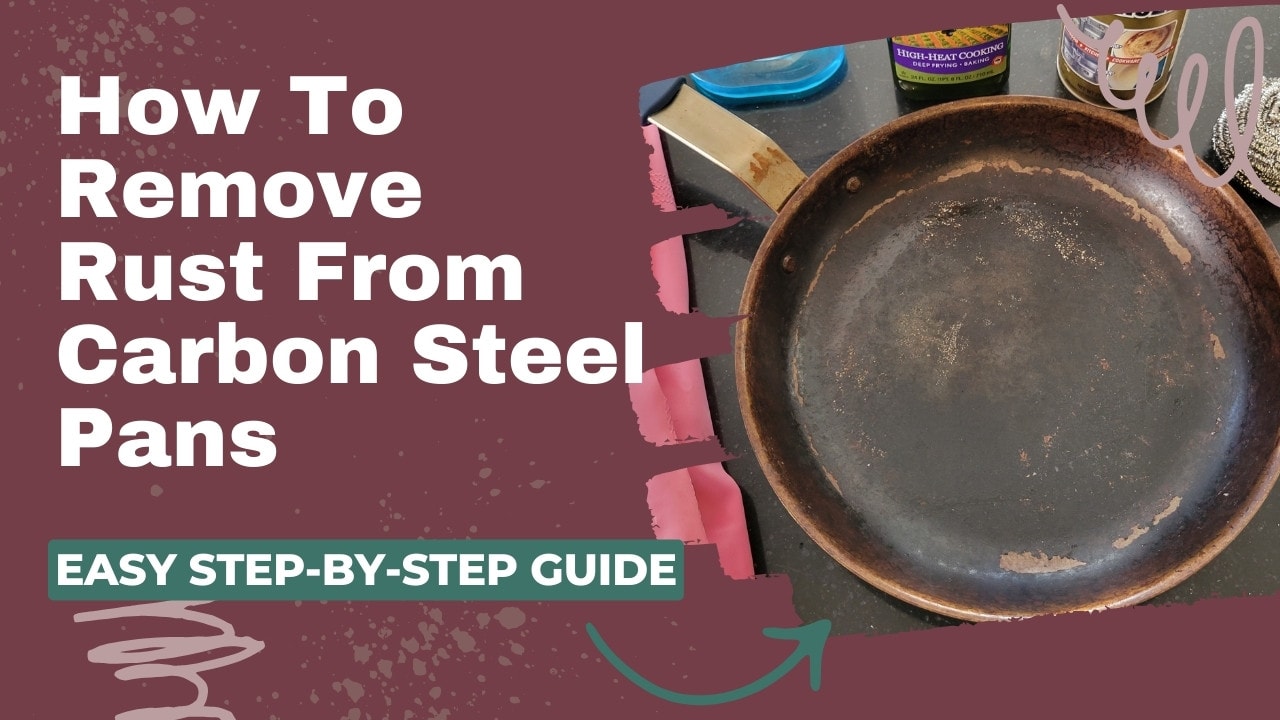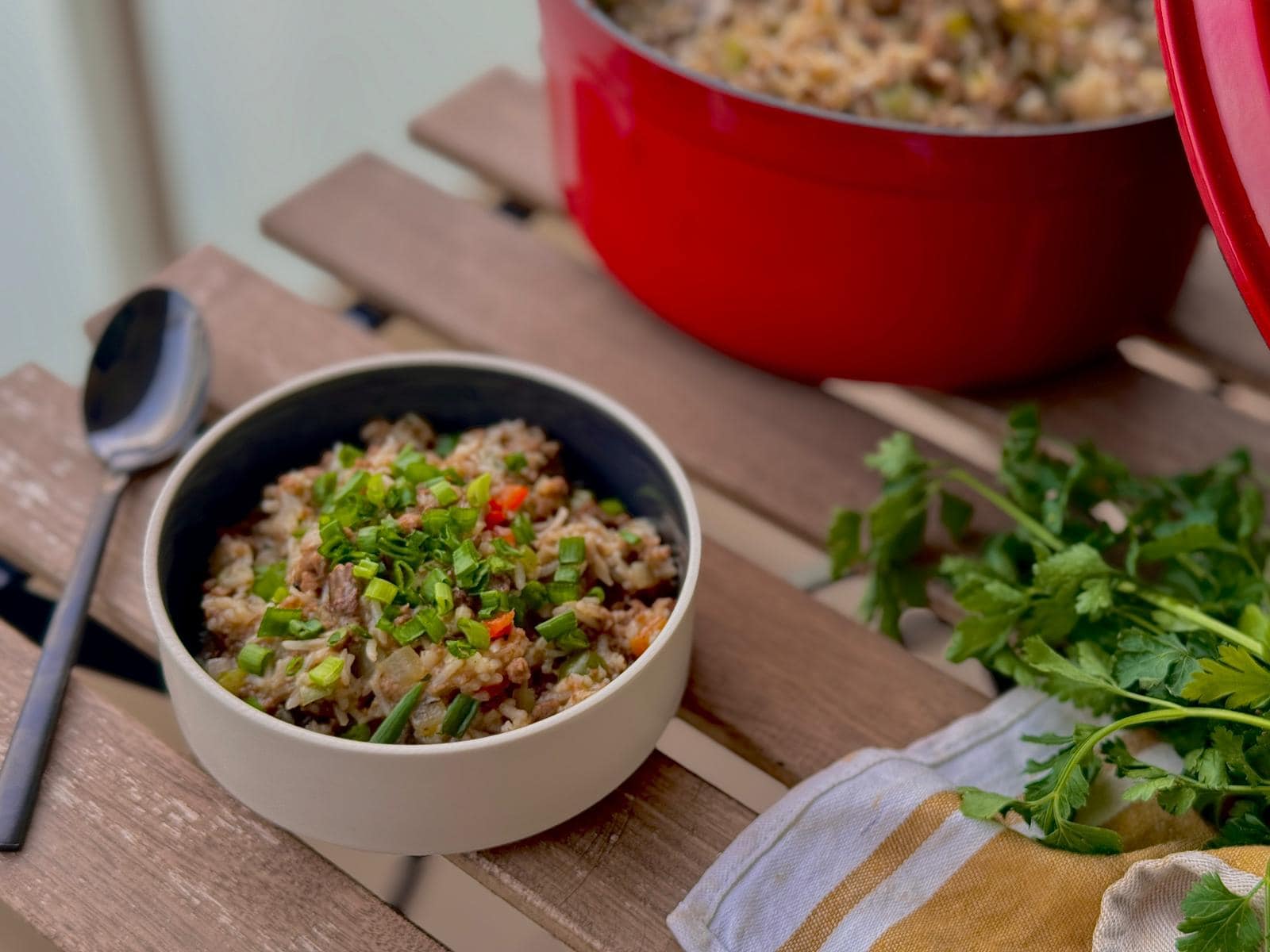A spot of rust on carbon steel cookware is completely normal, especially if your pan is new and still developing its seasoning. So if you see rust, don’t be alarmed! You can easily remove it in a few minutes, restoring your pan to ready-to-be-cooked-in condition. All you need are a few household items you probably already have.
This easy-to-follow step-by-step guide will not only tell you how to bring back your cookware from any degree of rust but also show you how to condition your pan to prevent it from rusting in the future.
If Your Carbon Steel Pan Rusts, Is It Ruined?
A spot of rust on a carbon steel pan definitely does not mean that it’s ruined. In fact, you can restore a carbon steel pan that’s covered in rust as long as it hasn’t penetrated too deeply. The only time a carbon steel pan is beyond repair is if the rust has eroded so much of the pan that you cannot restore an even cooking surface.
How Do You Remove Rust from Carbon Steel Cookware?
It’s easy to remove small spots of surface rust from carbon steel. Grab a cloth or paper towel, place some coarse salt on the rust spot, add a little cooking oil, and rub in a circular motion to remove. For larger areas, grab a scour pad or steel wool and scrub it with hot, soapy water until the rust lifts. You’ll need some elbow grease to give it a good scrub.
For deeper invasive rust, the process is more complex. First, scrub with a scour pad and rinse out, then soak in equal parts vinegar and water before scrubbing again. Then, season to prevent recurring rust. I’ll show you how to do all three methods step-by-step below.
What You Need for This Tutorial
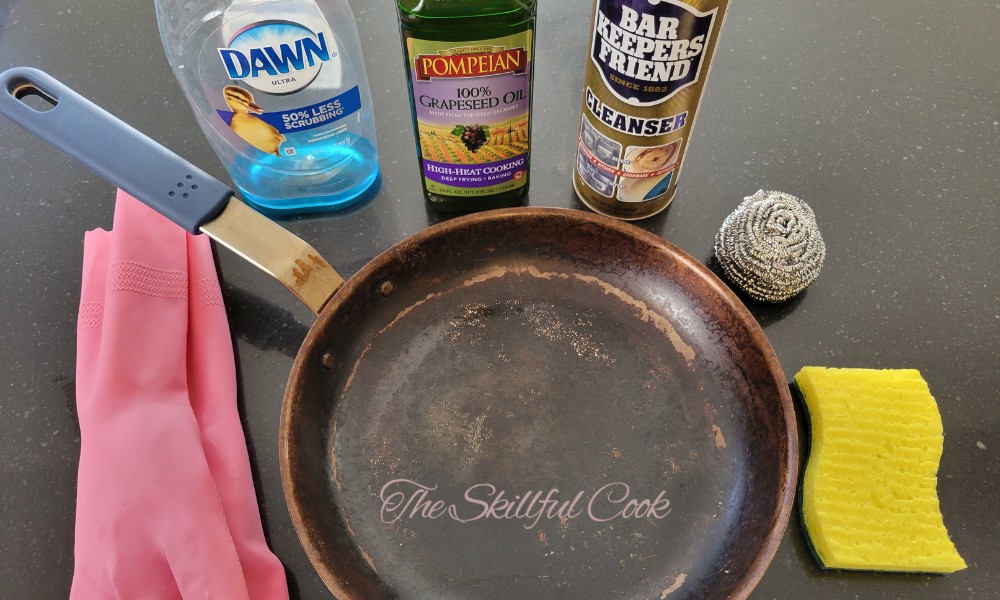
How to Remove Rust Stains from Carbon Steel Cookware
1. The Salt Scrub Method
For small rust spots, this is quick and easy. Cleaning with salt and oil is preferable to water, since water exposure caused your pan to rust in the first place.
- Place a little coarse salt and oil on the rust spot.
- Using a soft cloth or paper towel, rub the salt and oil in a circular motion until no more rust remains.
- Season the pan and store in a dry place.
2. The Scouring Method
For larger areas of surface rust, this is the quickest and easiest way to remove rust and restore the pan back to cooking condition.
- Fill the pan with hot, soapy water and scrub with steel wool for as long as it takes to remove the rust. Then rinse.
- Dry thoroughly – place the pan on the stovetop on low heat until all water has evaporated and it’s bone dry.
- Let the pan cool, then add a few drops of oil. Using a paper towel, coat the entire pan with a very thin layer of oil. Cover the outside and underside of the pan as well.
- Heat the pan to season it. Then store in a dry place.
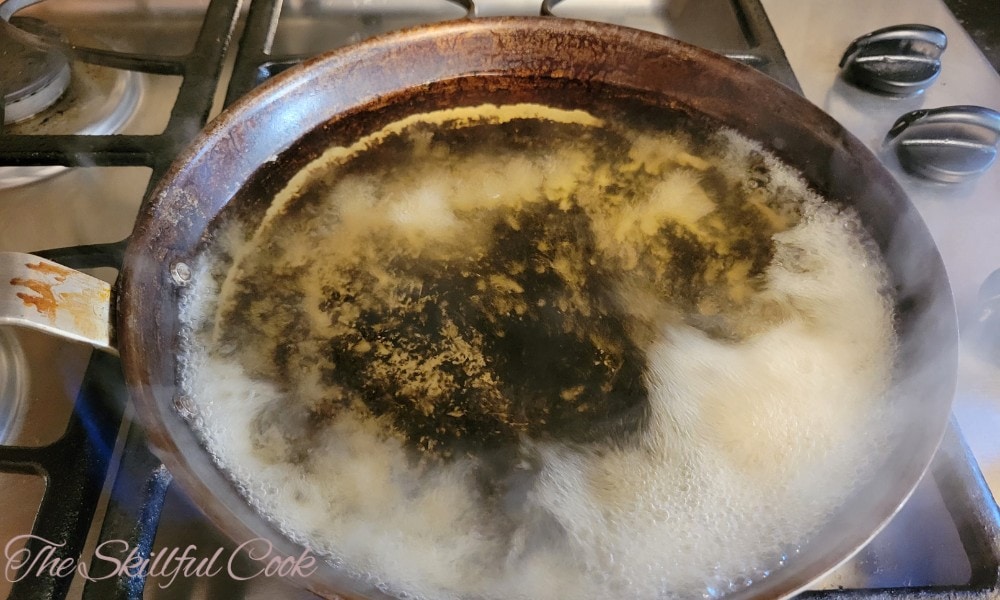
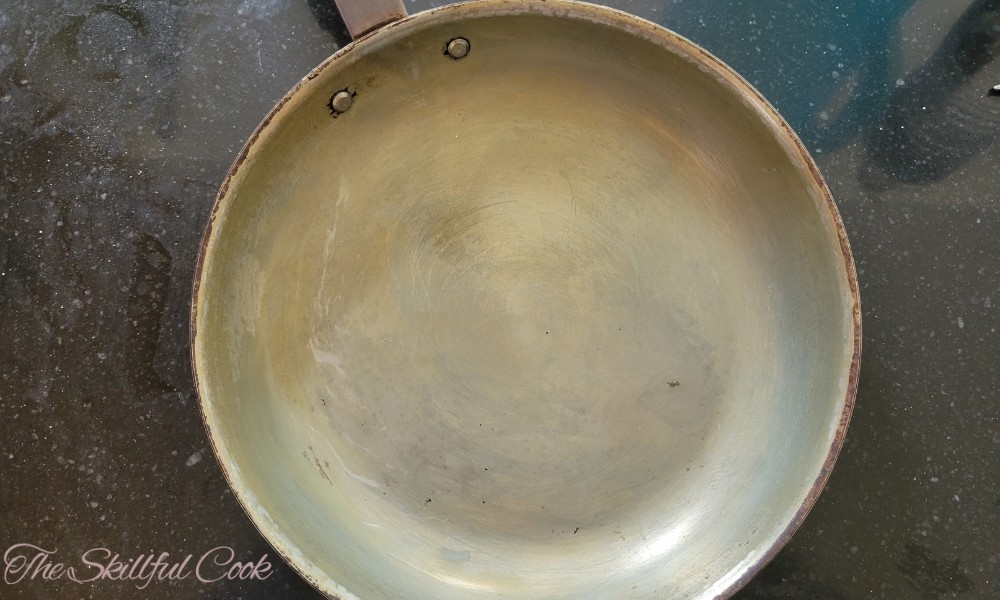
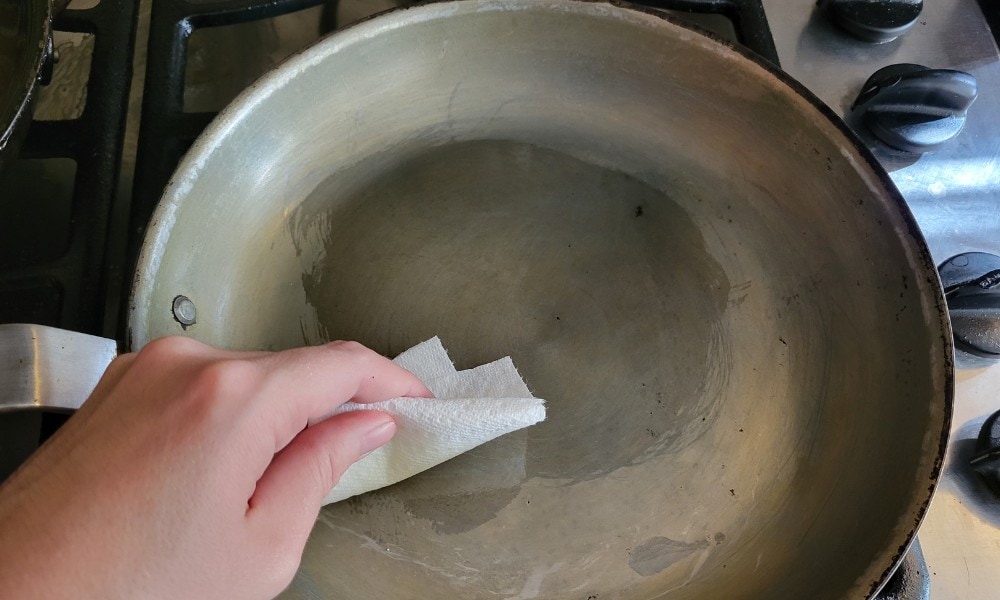
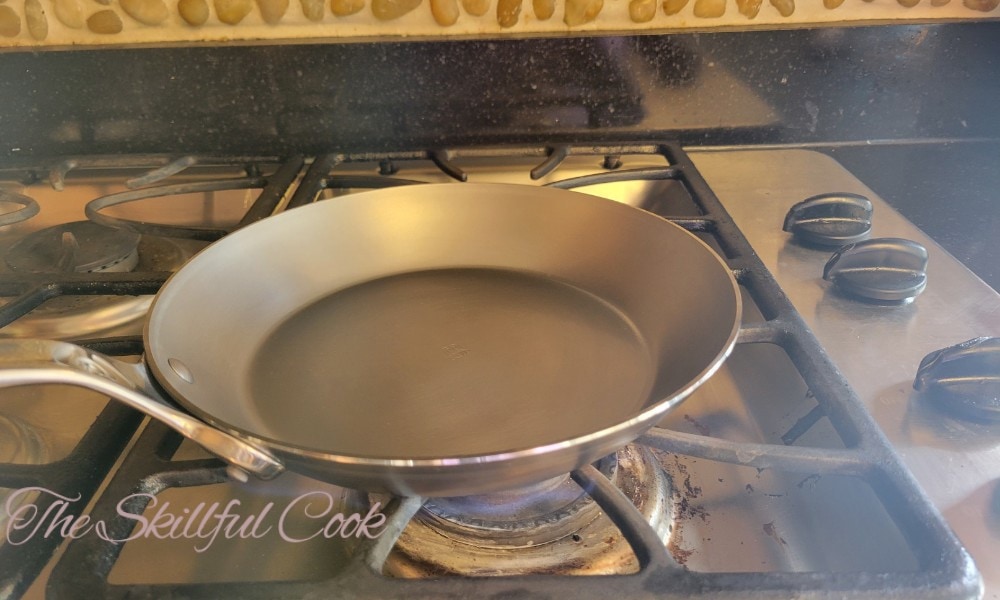
3. The Vinegar Method
For pans with deeper, more invasive rust covering the inner or outer surface of the pan, this is the method you need.
- Scrub the pan with hot, soapy water using an abrasive pad. Some visible rust may remain – or more rust may form alarmingly quickly after this process. Don’t worry; we’ll get it all in the end!
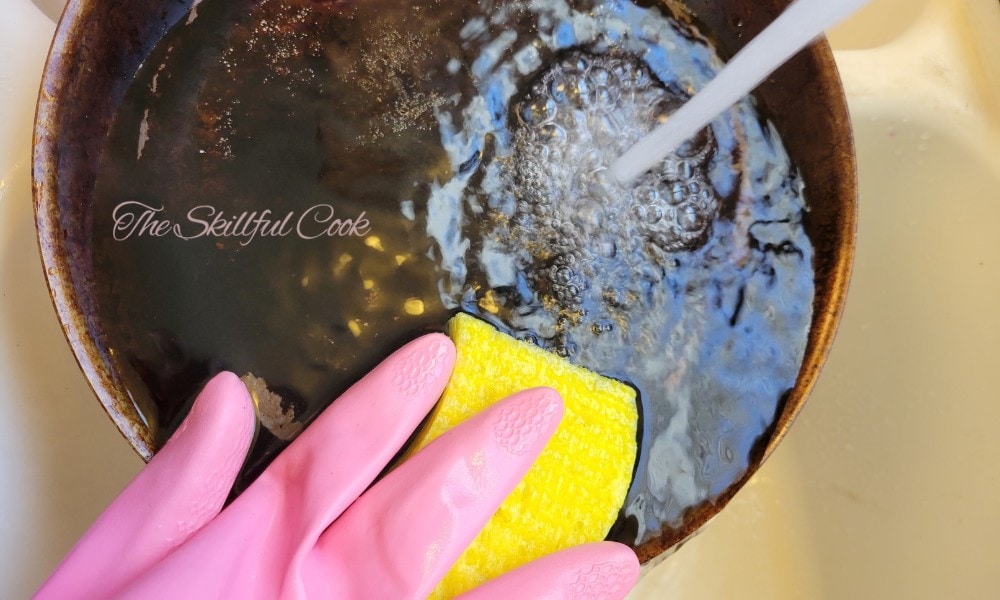
- Soak the pan in a container or sink filled with 50/50 vinegar and water solution. You only need enough to cover the body of the pan unless your handle is also carbon steel and rusty. (Most cookware handles are made of stainless steel, which shouldn’t rust.)
- After soaking for 1-2 hours, wash the pan again in hot, soapy water with an abrasive pad. You will see most of the rust has come off. If there is still some visible rust, it’s okay; it will come off in the next step.
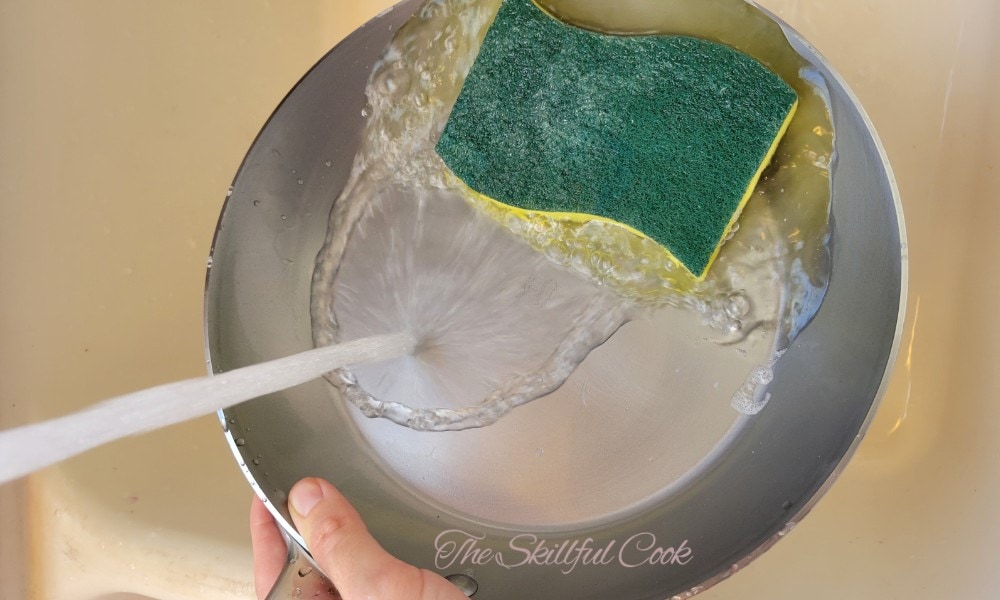
- Baking soda and vinegar will strip the last of the rust and seasoning from your pan, taking it back to the base metal. Sprinkle a little baking soda in the pan and add a tiny splash of vinegar, just enough to make a paste. Fully coat the pan, and scrub with a scour pad until all rust has gone, then wash it out one last time.
- Dry the pan. Place the pan on the stovetop on low heat to evaporate any moisture and prevent rust from returning.
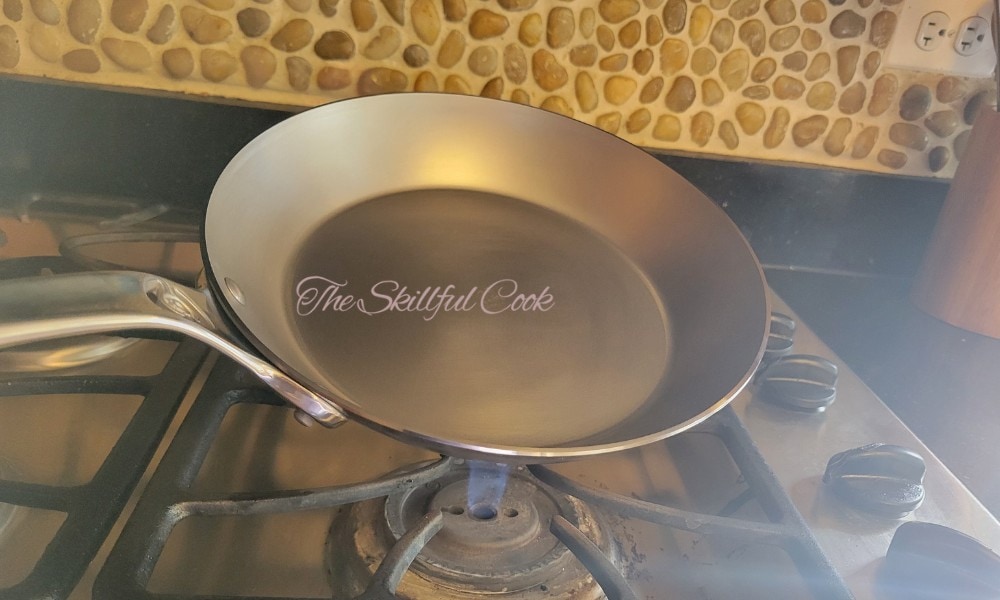
- Add a tiny amount of oil to the pan (choose one with a high smoke point and neutral flavor like canola, grapeseed, or sunflower). Using a paper towel, wipe the entire pan; don’t forget the underside. You only want a very thin layer of oil, so wipe off any excess. It should look shiny, not wet, or it will season into a sticky layer.
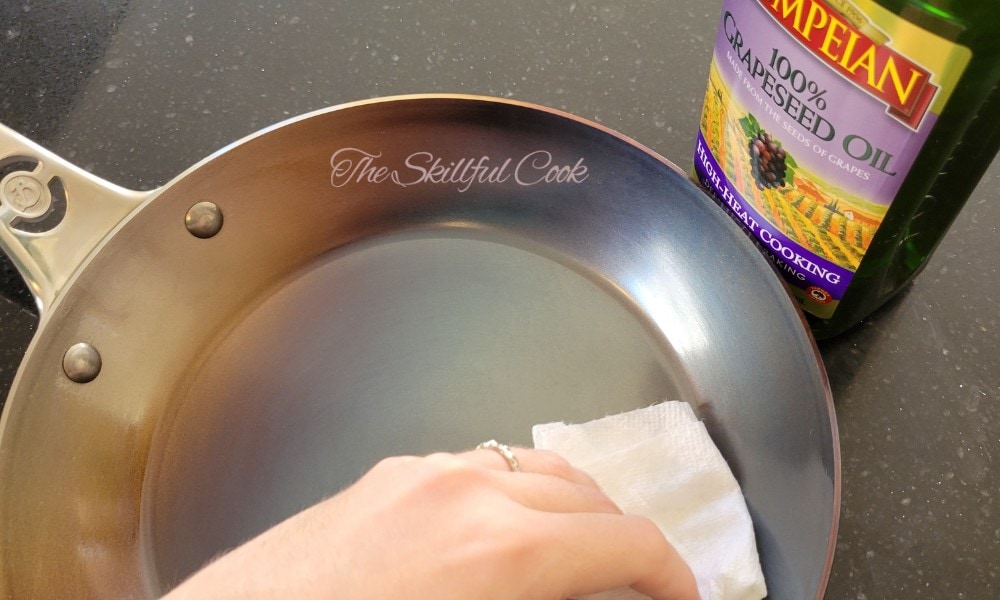
- Season the pan. Place on the stovetop over low heat and increase heat to medium until the pan starts to smoke. When the smoke stops, turn the heat off and completely cool the pan. It will become quite a bit darker.
Your carbon steel pan is now restored and ready to cook on.
Other Ways to Remove Rust
If you discover a vintage carbon steel pan that’s completely covered in rust, you may be able to find someone who says they can restore it using electrolysis. Electrolysis is the process of using an electrical current to transfer rust from a negatively charged piece of metal (your pan) through water to a positively charged piece of metal. Using electric currents, electrolysis actually converts rust back into iron! You can find amazing cookware restoration videos on YouTube that use this process.
If you’re really committed, you can build your own electrolysis tank and do it yourself. But since that involves water and an electric current, it can be dangerous. Unless you want to get into hardcore cast iron/carbon steel restoration, it makes more sense to try the vinegar method at home! Whatever method you choose, use caution when working with acids, heat, or electricity!
Why do Carbon Steel Pans Rust?
Rust – aka red iron oxide – is formed when oxygen and moisture interact with iron. Despite the name, carbon steel pans are only about 1-2% carbon and a whopping 97-99% percent iron. When the protective seasoning layer on a carbon steel pan wears thin, the exposed iron is susceptible to rust if it comes in contact with even a touch of moisture. This is why you should always wipe your pan with oil after washing it.
Leaving your pans to soak in water, not drying them completely, or storing them in humid places (under your sink) will cause them to rust quickly. Cooking acidic foods will strip the seasoning layer off carbon steel, exposing it to oxygen and allowing rust to form.
How to Season Carbon Steel Pans to Prevent Rust
The best oils for seasoning carbon steel are oils with a high smoke point and neutral flavor. Oils like sunflower, grapeseed, and canola fit this bill.
To season the pan:
- Add a tiny amount of oil. Using a paper towel, wipe the entire pan, coating the inside, outside, and the bottom of the pan. This seals it so oxygen cannot reach the surface to form rust.
- Transfer the pan to the stovetop and heat over low heat to start. Raise the heat to medium until the oil smokes. Wait for the smoke to stop, then turn off the heat.
- Once the pan cools, it will turn a darker color. This is how it is supposed to look when seasoned properly.
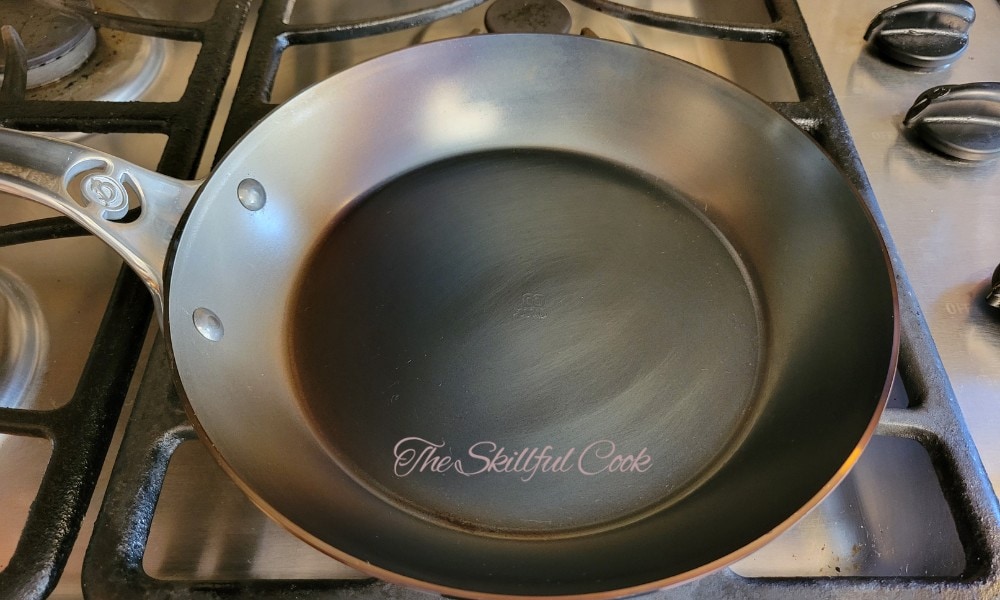
Seasoning carbon steel places a protective layer to prevent rust from returning. Regular seasoning, especially if you’ve cooked acidic foods, will prevent rust from ever being an issue again.
Frequently Asked Questions
Is it dangerous to cook on a rusted skillet?
According to the USDA, rust should not be ingested because it is not a food-safe material. However, agencies such as the EPA seem to be much more concerned with humans breathing iron oxide dust than ingesting it. Since rust is simply oxidized iron, eating food on a skillet that has a spot of rust is not likely to hurt you. However, the rough surface of rusted utensils and pans can be a breeding ground for potentially harmful bacteria, so you should always remove rust from your cookware before using it.
Does vinegar remove rust from steel?
Yes, the acidity of vinegar will remove rust from steel, which is why it’s recommended for cleaning heavily rusted pans. It will also strip away any protective seasoning, so always reseason your pans if acidic foods have been cooked on them.
How do you recondition a carbon steel pan?
In most cases, totally stripping the seasoning on a carbon steel pan isn’t necessary. Usually, all you need to do is scrub with salt and oil to remove rust and carbon buildup, then season the pan as usual. If the seasoning is truly in tatters, you can soak the pan in vinegar overnight before scrubbing and seasoning it.
Conclusion
Rust in carbon steel pans is normal and happens all the time. Using the salt scrub method, the scouring method, or the vinegar method (depending on the degree of rust), you can remove rust and restore carbon steel pans quickly and easily.
We’d love you to regale us with your rust removal stories! Or if you have any questions, please leave a comment below, and we’ll answer as soon as we’ve finished cooking.

